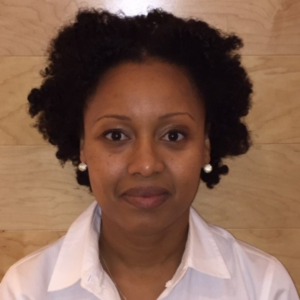How chart audits affect your reimbursement
Baby Boomers are 79 million strong in the United States and are turning 65 years old at a rate of 10,000 per day from now until 2030. By 2030, more than 20 percent of the population is expected to be over 65.
Boomers are making their presence in skilled nursing facilities (SNFs), whether it is for short-stay rehabilitation or as a new life-long home. Boomers expect excellent outcomes, maximum value and compassionate care. Simultaneously, medical advances are extending the lives of older adults, which impacts the type and acuity of medical care delivered in these facilities. It is not uncommon to treat residents who have more than eight chronic diseases and several acute diseases (post-knee replacement and pneumonia).
This has increased the types and frequencies of treatments and therapy, as well as assistance with basic activities of daily living (ADLs). The trend for ADLs indicates that 95.2 percent of Medicare admissions to SNFs need help with four of the five primary ADLs. The need for SNFs and other senior living services has never been greater and will expand exponentially over the next decade.
Clinical complexity (case mix) of residents in SNFs has continued to increase. Nursing skill requirements and nursing time have increased immensely as a result. In addition to nursing, the primary therapies utilized in SNFs are physical therapy, occupational therapy and speech therapy.
Health reform mandates cost efficacy. As a result, patients are discharged from acute care hospitals to SNFs more quickly and in sicker conditions. Utilizing advanced technology and minimally invasive surgeries and procedures have made these chronic/palliative healthcare sites viable patient care alternatives. Outcomes and performance studies, qualities of care, accurate documentation of coding, care and services, and internal audit quality review programs are expected to demonstrate the value, efficacy, effectiveness and efficiency of patient care to the Centers for Medicare and Medicaid Services (CMS) and other payers. It may be a tall order for SNFs, but it is a required and highly regulated order. CMS priority remains focused on patient health, progress and outcomes, well-being and satisfaction of care.
SNFs have demonstrated quality of care and continued improvements. The percentage of SNFs that have citation-free standard and complaint surveys increased from 6.4 percent (2008) to 7.9 percent (2013). The CMS top three citations of SNFs are infection control, unnecessary drugs administration and medication errors. The 2015 audit protocols have initiated a new CMS audit cycle—therefore, even if an SNF was audited a year ago, it could be audited this year as well.
CMS has redesigned its compliance program to be more effective by focusing on outcomes and attempting to be less burdensome. CMS is now initiating its ‘seven elements of compliance’ and using the tracer sample model and following these tracer samples through the operations of the organization to determine a SNF’s overall compliance. Most importantly, should an organization not demonstrate compliance, it is likely that compliance measures do not exist or they are markedly defective. Steep increases in CMS Civil Money Penalties and Sanction Activity are used to deter SNFs from poor performance. Results from these sample tracers will be applied as an error rate for all of their SNF patients with that specific code, service or care.
While quality of care citations from CMS surveyors are declining, CMS is observing a problematic behavior occurring in SNFs. The Office of Inspector General (OIG) and CMS are closely monitoring the reimbursement behaviors of SNFs, especially the RUG (Resource Utilization Group) scores.
When a SNF patient receives a higher level of therapy, it results in a higher RUG score, and in turn, higher reimbursement to the SNF (under Medicare Part A). The RUG rate for each SNF is determined during their assessment period. The more physical therapy minutes and expensive technology utilized for therapy during the assessment period, the higher the RUG rate/coding level is for that SNF.
Both the OIG and CMS are now observing ultra-high rehabilitation groups increasing at an alarming pace, while also detecting that higher therapy minutes decline once the RUG assessment period is completed for a SNF. Their audits have demonstrated many SNF patients frequently have therapy for only the minimum minute amount so as to capture higher RUG rates and reimbursement for the facility. In short, the minimum minutes on the higher RUG rate becomes the ceiling for the majority of their patients. While the case mix of patients is diverse, the indicated ceiling minutes of therapy is “homogenized” for all. The OIG and CMS intend to scrutinize SNFs for such fraudulent operational and revenue-driven behaviors.
The OIG and Medicare are the primary payers of SNFs with 14 percent of SNF patients being paid for with CMS dollars. The trend is that CMS will continue to increase their audits for long-term care facilities and their respective physicians, in order to seek appropriate remedies for any False Claim Act (FCA) violations. The OIG intends to explore Medicare Part A billing, therapy utilization trend, and SNF internal behaviors and rules, which expect clinicians to provide therapy minutes that comply with only the minimum level thresholds.
FCA violations for submitting false claims for payment include:
- Providing medical care focused on increasing reimbursement rate
- Falsely documenting care
- Misrepresenting how care was completed
- Pressuring clinicians and staff to achieve target revenue and to ‘award’ staff to achieve such targets
- Retaining payments on false claims rather than refunding them to the government
- Billing for care that was not actually provided
- Providing unneeded care or extending patient stay without cause or adequate clinical documentation
- Billing for therapy that was not “skilled”
- Providing care to patients who could not benefit from or tolerate the therapy
The OIG will question and investigate. Civil penalties range up to $12,000 for each proven act of FCA violation as well as treble damage costs to the government. Certainly, the CMS is using high penalties to deter and reduce the potential for false claims.
In order to prevent potential questions/investigation, a SNF’s daily operations should include the following to reduce both liability and penalties:
- Structure SNF operations and procedures to ensure appropriate clinical care and decision-making for each disease-state. Providing the correct patient care is a priority of CMS surveyors and auditors. They expect clinicians to the deliver and document the of quality care, substantiated by positive outcomes from pertinent medical and nursing care plans. Documented frequency and patient toleration of the therapy is essential. Should therapy not be tolerated by a patient or their medical condition, the therapy should be modified, changed or stopped.
- Develop a strong compliance and quality assurance program for their facility. Review frequently and update to reflect changes in the facility demographics, disease-states and medical processes and procedures and patient care plans. Bill only for services that are documented.
- Watch the RUGs. The OIG is analyzing trends. In particular, statistics concerning ultra-high RUG groups, high level of therapy utilization, and therapy minutes during the assessment period and after the assessment period and patient outcomes studies of therapy effectiveness as well as plan of care. Keep consistency in therapy minutes derived from the assessment period. If the overall minutes decline, it requires documentation as to the reason why.
- Update, review, audit and maintain all patient charts frequently. The CMS surveyors continue to use the patient care medical records (patient charts) to reflect the service and care provided to a patient accurately. It is the primary tool used by auditors to observe deficiencies, errors and omissions of care, coding errors, services billed but not rendered, and others. The patient chart documentation can either reflect good or substandard care and services. SNFs need to perform internal audits periodically as a means to improve documentation of services and operations. Patient medical records should be reviewed monthly to ensure the appropriate revenue codes have been assigned.
- Bundle all claims for patient services for Medicare patients during the covered Part A SNF stay, as per the consolidated billing requirements. SNFs who bill separately for some services may be receiving overpayments from the government. The OIG and CMS will penalize SNFs for overpayment errors that have not been returned to the government. Document all correspondence to CMS concerning such occurrences.
Typically, CMS surveyors review a small percentage of charts and project similarly that the remaining unreviewed charts will contain similar inaccuracies (for each ICD-10 code). CMS will assign an error rate to the facility for the remaining charts that include that specific disease state or ICD-10 code. While these penalties can be sizable, it is in the best interest for SNFs to be proactive and set up quality review plans and procedures for documentation of care, reasons for care, services ordered and services rendered, as well as a system to review coding frequently for accuracy.
 Krisandra Panting, RN, BSN, MBA, is a Compliance Consultant at MedSafe, Wellesley, Mass. She can be reached at 781-237-4488.
Krisandra Panting, RN, BSN, MBA, is a Compliance Consultant at MedSafe, Wellesley, Mass. She can be reached at 781-237-4488.
I Advance Senior Care is the industry-leading source for practical, in-depth, business-building, and resident care information for owners, executives, administrators, and directors of nursing at assisted living communities, skilled nursing facilities, post-acute facilities, and continuing care retirement communities. The I Advance Senior Care editorial team and industry experts provide market analysis, strategic direction, policy commentary, clinical best-practices, business management, and technology breakthroughs.
I Advance Senior Care is part of the Institute for the Advancement of Senior Care and published by Plain-English Health Care.
Related Articles
Topics: Articles , Executive Leadership , Medicare/Medicaid , Regulatory Compliance










